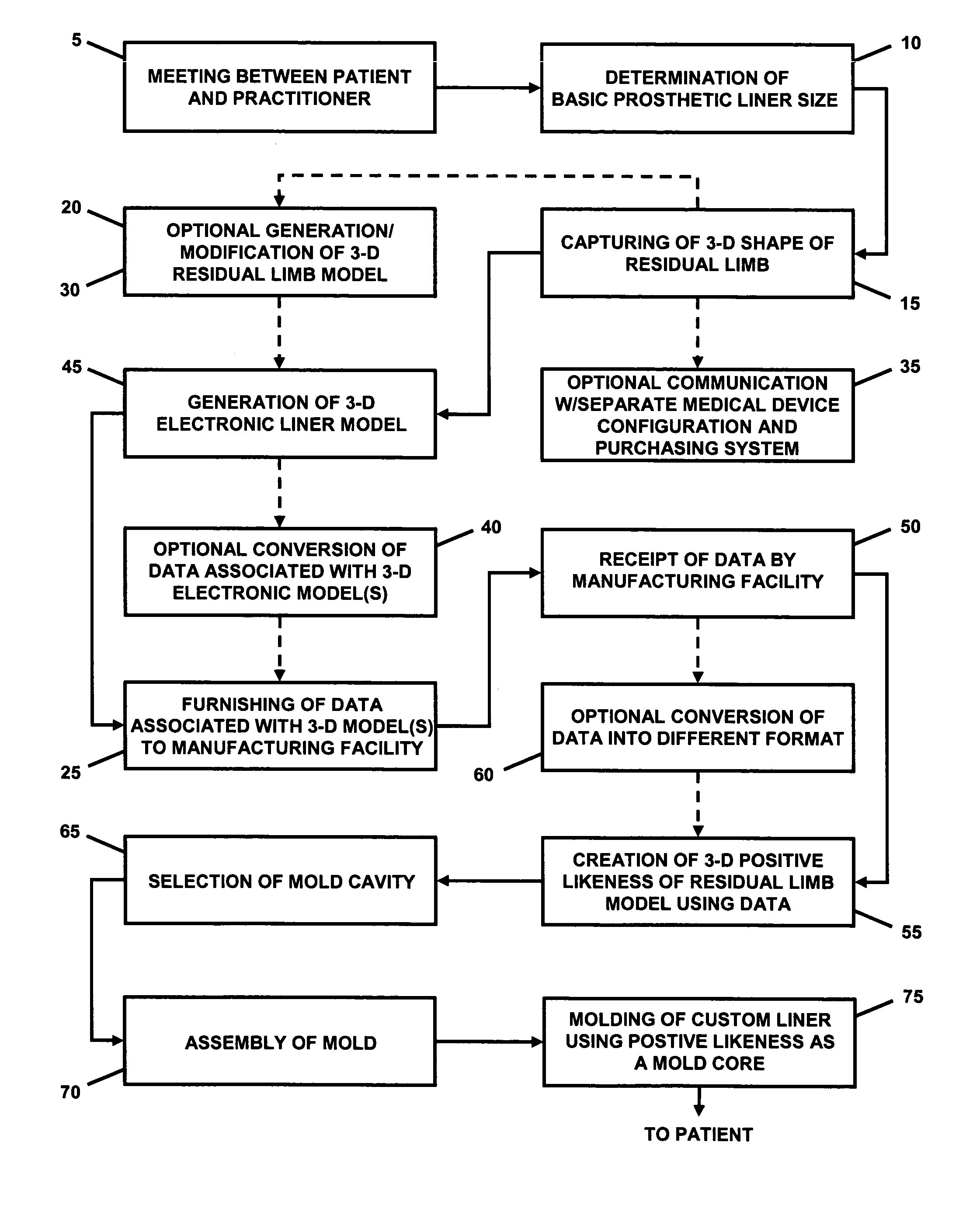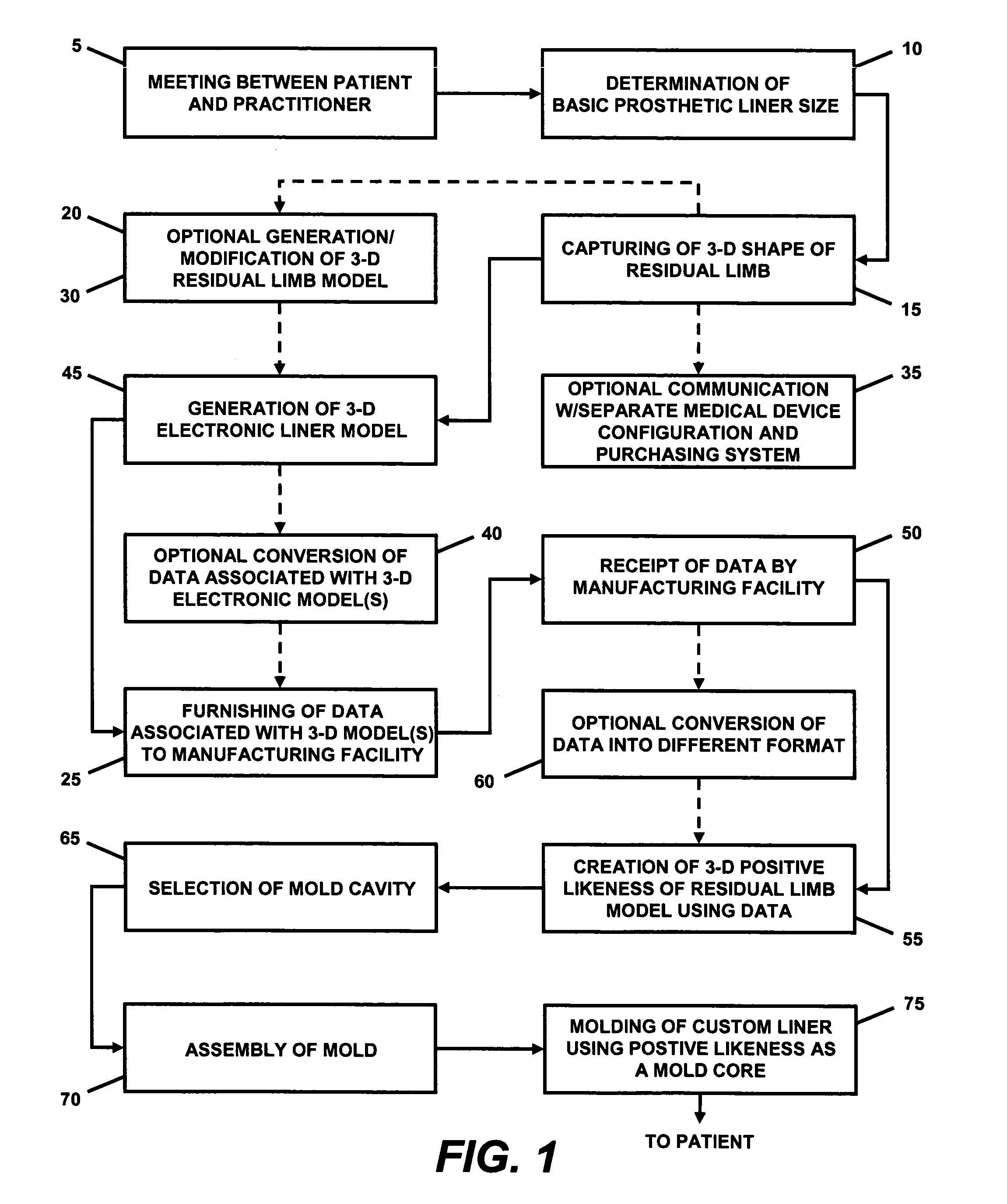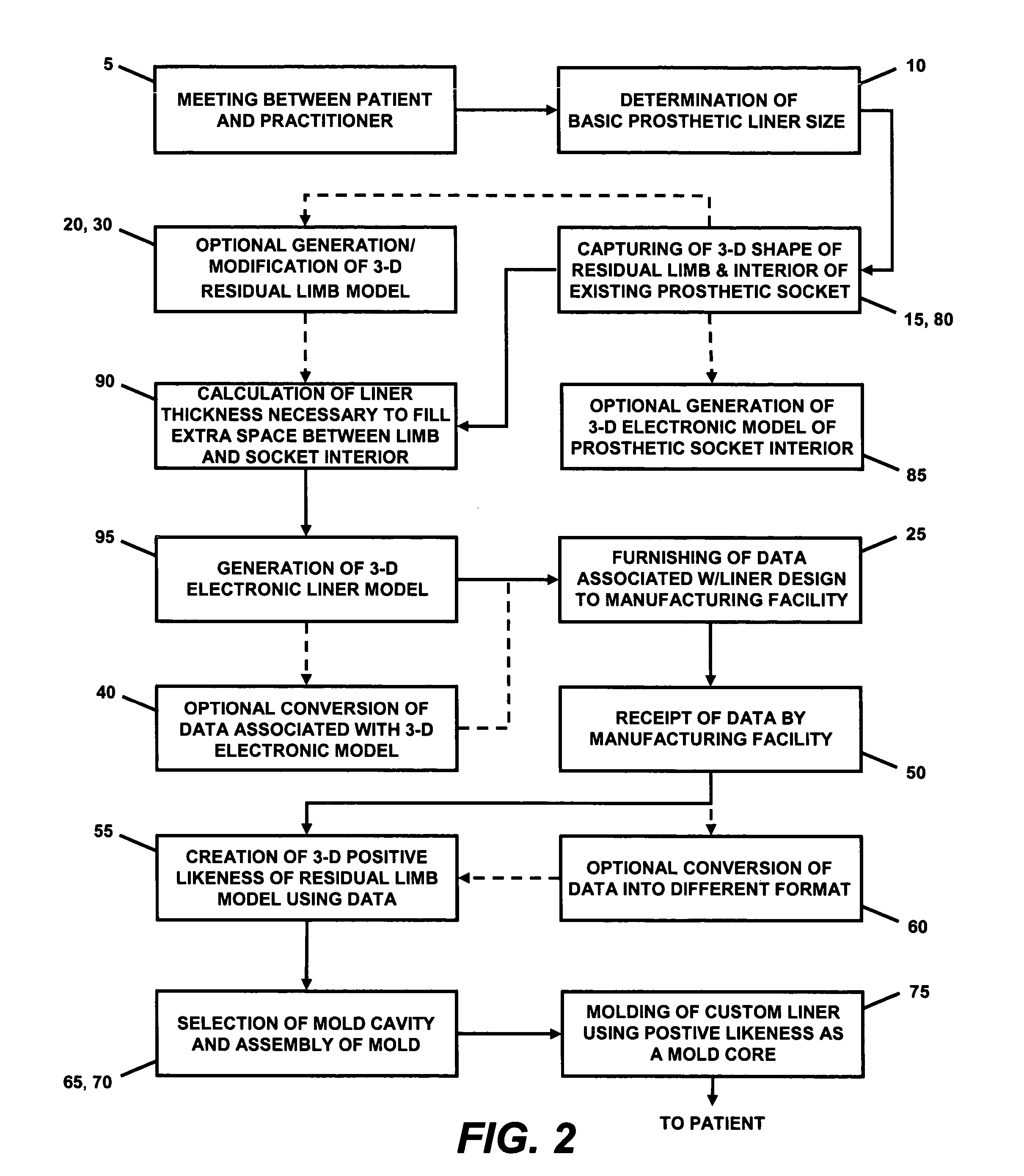Custom prosthetic liner manufacturing system and method
a prosthetic limb and manufacturing system technology, applied in the field of custom prosthetic limb manufacturing system and method, can solve the problems of insufficient retention of prosthetic legs, inability to use prosthetic legs, and complex modern ak prosthetic limbs, so as to improve durability, stability, and cosmetic appearance of the liner. , the effect of easy rolling
- Summary
- Abstract
- Description
- Claims
- Application Information
AI Technical Summary
Benefits of technology
Problems solved by technology
Method used
Image
Examples
Embodiment Construction
)
[0026]The system and method of the present invention allows for the efficient and cost effective manufacturing of a custom prosthetic liner. The system and method of the present invention will generally include: a means for scanning, photographing, digitizing, measuring, or otherwise capturing the 3-dimensional shape of an amputee's residual limb; an optional means for converting the captured shape of the residual limb into a viewable 3-dimensional model; a means for producing a viewable 3-dimensional liner model; a means for manipulating the 3-dimensional residual limb and / or liner model in order to further enhance and customize the fit and performance of the liner that will be manufactured therefrom; a means for providing the finalized data associated with the 3-dimensional liner model to a facility that will manufacture a liner from the data; a means for producing a 3-dimensional likeness (positive) of the (modified or unmodified) residual limb from the data; and a means of usin...
PUM
 Login to View More
Login to View More Abstract
Description
Claims
Application Information
 Login to View More
Login to View More - R&D
- Intellectual Property
- Life Sciences
- Materials
- Tech Scout
- Unparalleled Data Quality
- Higher Quality Content
- 60% Fewer Hallucinations
Browse by: Latest US Patents, China's latest patents, Technical Efficacy Thesaurus, Application Domain, Technology Topic, Popular Technical Reports.
© 2025 PatSnap. All rights reserved.Legal|Privacy policy|Modern Slavery Act Transparency Statement|Sitemap|About US| Contact US: help@patsnap.com



